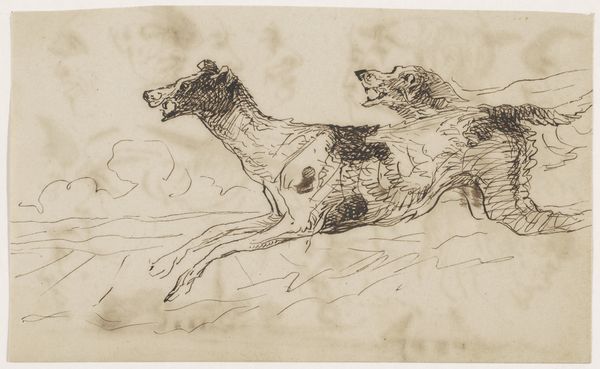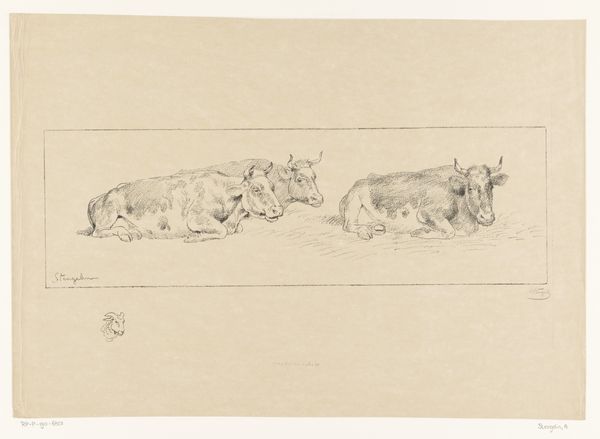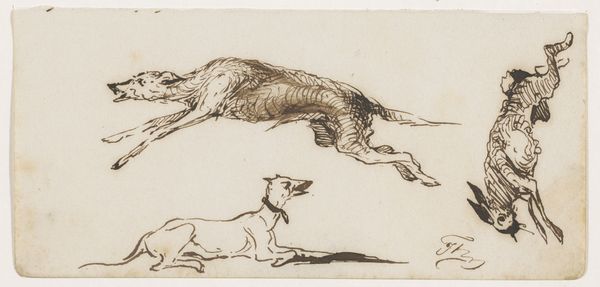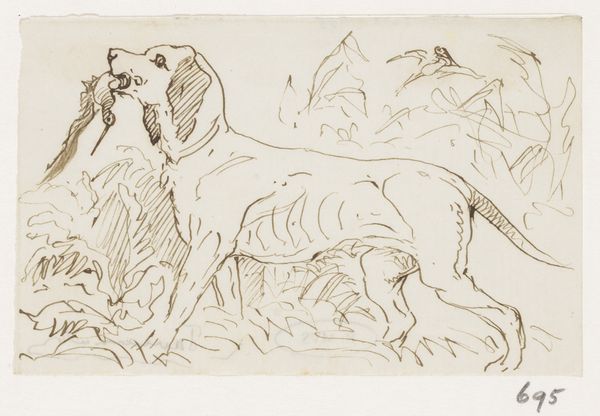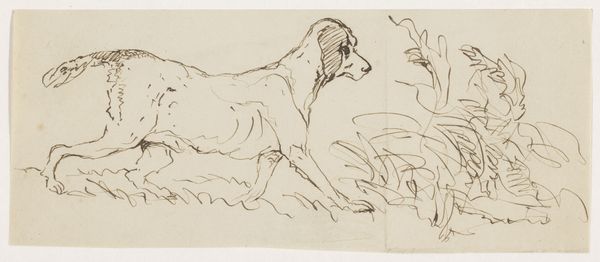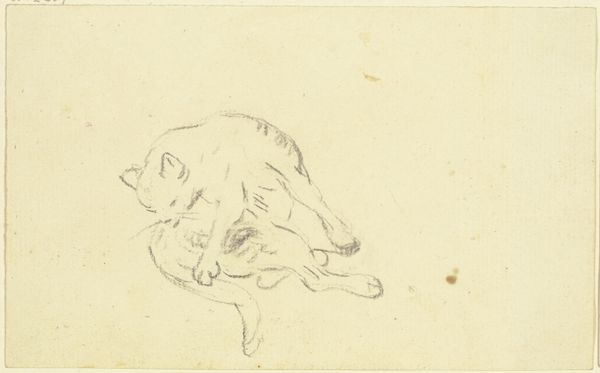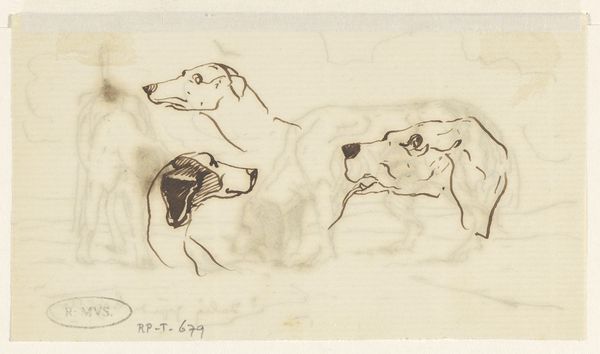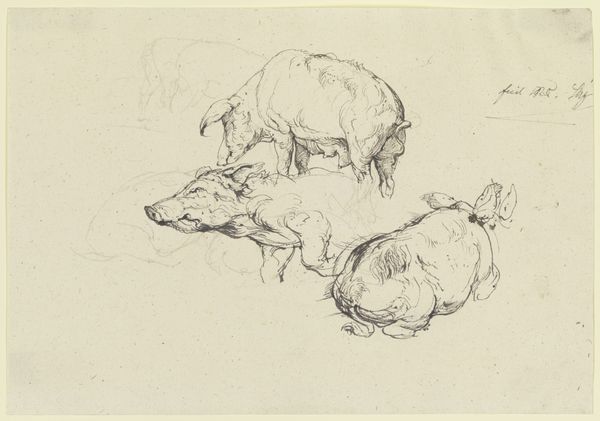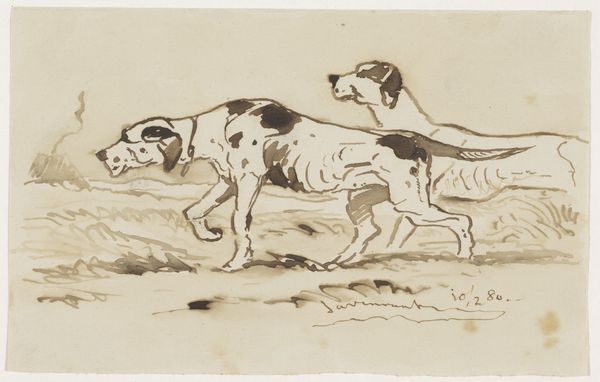
drawing, paper, ink
#
drawing
#
ink drawing
#
animal
#
pencil sketch
#
dog
#
landscape
#
figuration
#
paper
#
ink
#
sketchbook drawing
#
watercolour illustration
Dimensions: height 140 mm, width 214 mm
Copyright: Rijks Museum: Open Domain
Curator: This drawing is titled “Jachthonden en koppen,” which translates to "Hunting Dogs and Heads," created in 1866 by Johannes Tavenraat. It’s currently held here at the Rijksmuseum. Editor: Immediately, I’m struck by the economy of the lines. It feels spontaneous, like a glimpse into the artist’s sketchbook, capturing the raw energy of both the dogs and the human subjects. Curator: That's a sharp observation. Tavenraat was indeed interested in capturing fleeting moments. This piece provides insight into the societal relationship between humans and animals in mid-19th century Netherlands, specifically regarding hunting culture. The dogs were tools within the broader hunting framework, with specific working roles, and the rendering highlights their athleticism, an active contribution to a very specific culture. Editor: And look at the positioning! The dogs dominate the upper half of the drawing, suggesting their importance, their societal function—which you've already framed quite well—while the fragmented head studies are relegated below, like afterthoughts. It prompts me to question how the dogs' roles have shifted throughout history. Curator: Absolutely, the hierarchical placement subtly critiques the era's values. The dogs, vital to hunting which at that point has changed from essential activity to social function, almost visually “outrank” the human figures. How can we look at this artwork to reflect the ways in which labor and utility shape perceptions of value and worth? Editor: Plus, it subtly pushes us to interrogate anthropocentrism. Tavenraat uses ink on paper, right? Such unassuming materials serve to create a powerful, even critical, commentary. The relative positions in the work feel indicative of status, yet their ephemeral nature and fragile rendering also reminds of the way these working relationships change over time and across the sociopolitical landscape. Curator: Yes, the simple medium is crucial here. The immediacy and simplicity allow for accessibility while subtly encouraging critical thought around ingrained societal hierarchies and values. This invites consideration of shifting perceptions of utility, social value, and the role of non-human actors within a system. Editor: It's fascinating how this sketch, ostensibly of dogs and human heads, provokes questions about labour, worth, and the human-animal dynamic across history. Thank you. Curator: Agreed, these fragmented pieces offers a potent commentary on the societal currents of Tavenraat’s time and its echoes in our own.
Comments
No comments
Be the first to comment and join the conversation on the ultimate creative platform.


